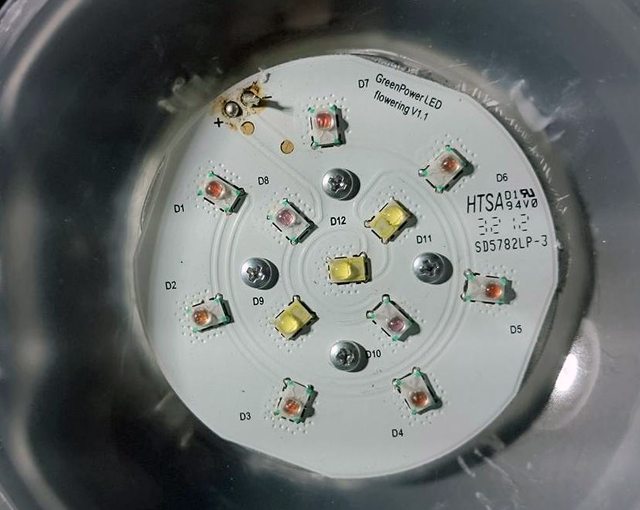Wow, talk about a wall of questions coming at me! No problem with questions mate, it's how we all learn on here. I'll try to answer them for you.
Was that approx 12 lights then (6/lady) - yes, 12 lights with globes ripped off spread in a 6x2 evenly over the cab. 2 plants under them evenly spaced so 6 lights each, but it is a small area and I have diamond Mylar on the walls, there is a lot of overlapping and reflected light so zero shadows.
How big was your growing surface area? - Converted set of drawers with internal dimensions of 28" wide by 15" deep x 32" high. That is 2.875 square ft growing surface area.
Do you think having 2 plants take up your canopy area affected your yield. - I can get 2x 10 litre pots in my cabinet with a heater, with zero floor space left. I grow autos mainly in cooler months as I can keep the lights on longer so I don't need to heat as much ( grow is in unheated concrete detached garage in UK), so put the autos in biggest pots I can get in. The pots literally can just fit in depth ways. I have tried a 5L pot auto once under these lights but only got 2 oz from it.
2 plants fill the space totally, 1 auto would leave space unused - I grow illegally for my MS suffering wife, so I need the best return I can get per grow in such a small space. 3 plants in there might get good results in smaller pots, but probably only same end weight total. I may as well save a seed and grow 2 that fill it.
I've heard that > 7200lm/sq ft is ideal - with globes off I have been told output goes up 20%, so I am getting roughly 21600 lumens over 2.85 sq ft. So about 7500 on/sq ft.
What were you at (light saturation) when you hit your 1.35g/w?- I have no idea what that light is in par etc as these bulbs don't have data sheets, but the plants liked it. Watts per sq ft is 54, which I have read is about ideal. I might get a lux meter app on my phone to see what readings are if they are reliable to use.
Is that typical for you (give or take for different strains)? When you had that success have you tried to continue with the same process? Grown any different strains under your households? - That grow was my 5th grow ever! It was also my first time ever with 2 of the same strain, always just got 1 seed before.
I did one Northern light photo under 180w CFL (6x 30w) - struggled with heat, overwatering, gnats, over feeding, you name it I did it. Got 1 oz
Swapped to 8x led and got 2 oz per plant with 2x autos.
Tried scrogging 2 x photos and got 2 oz each so decided the extra time wasn't worth it for photos under that setup.
Swapped to the current lights, upgraded to a proper extractor fan instead of pc fans and did 1 auto in a 5L pot and one in a 10L. The 5L got 2 oz but the Short stuff Sharkbite didn't auto and I had to flip it to 12/12 when the other plant was harvested. It ended up growing past the lights, even with bending the stems etc. I got 101g from it but it was a bloody nightmare grow and not what I would have planned.
Truthfully, the last grow was the first real grow I have done with my setup how i want it, with the plants growing how I intended them to. I have literally just started another comparison grow run by The Vault Seedstore, using 2x Mephisto 3 Bears OG plants, with the exact same setup, so we will see if last time was luck or no. About 3/4 way down.
https://www.rollitup.org/t/the-vaults-3-bear-og-auto-comparative-grow-in-association-with-mephisto-genetics.950971/page-7



 , I knew I was off! Lol instead of 2897768, I was using 2987786.
, I knew I was off! Lol instead of 2897768, I was using 2987786. haha but I think we're sorta on the same page.
haha but I think we're sorta on the same page.













